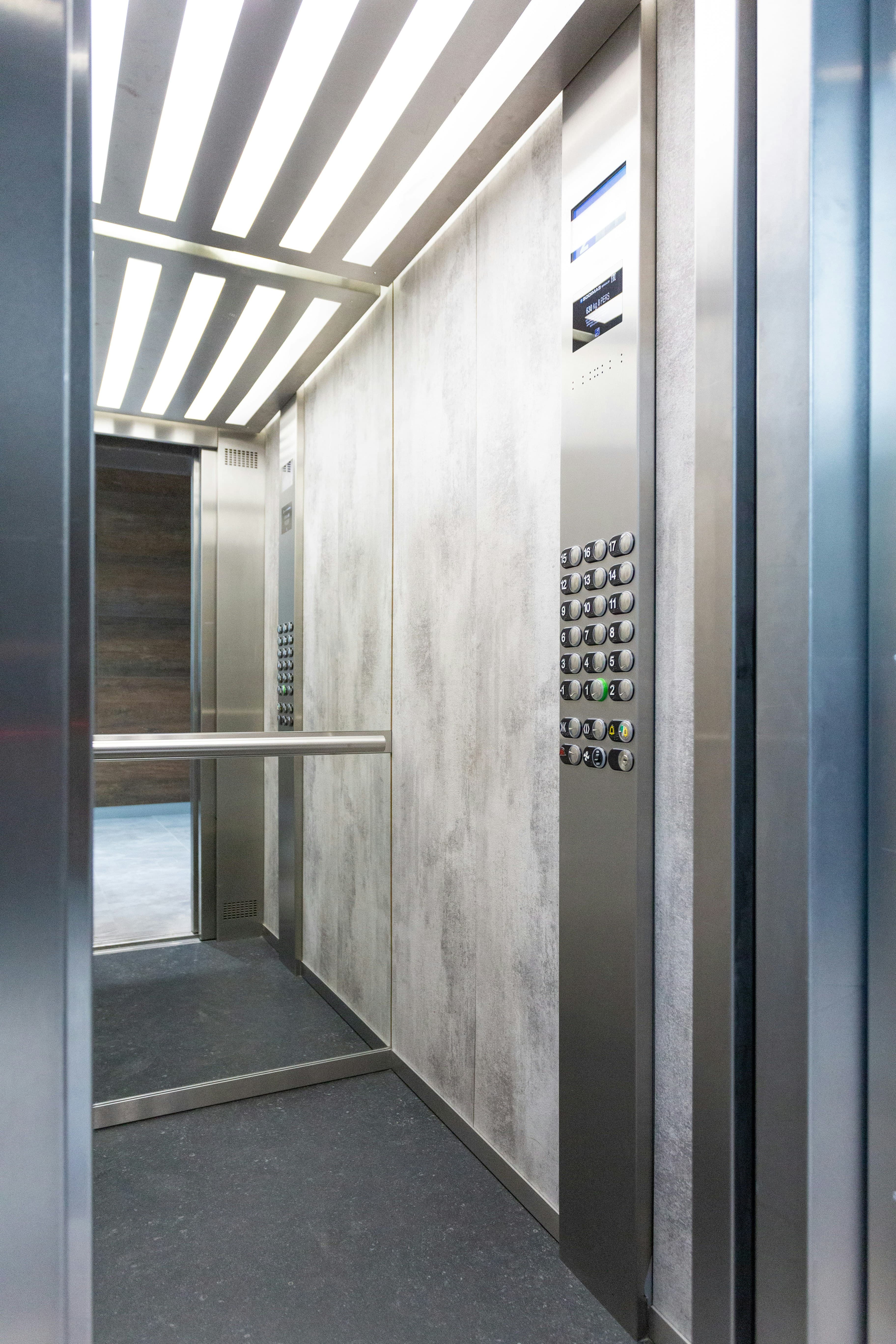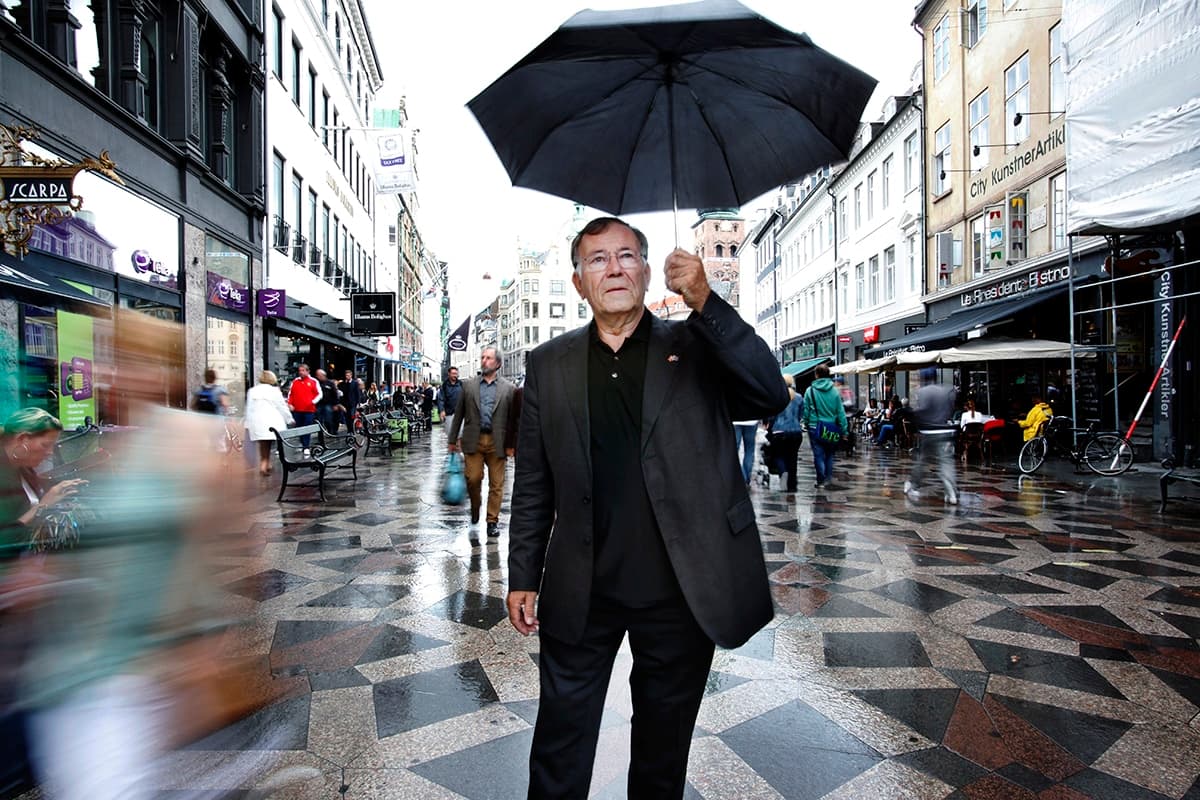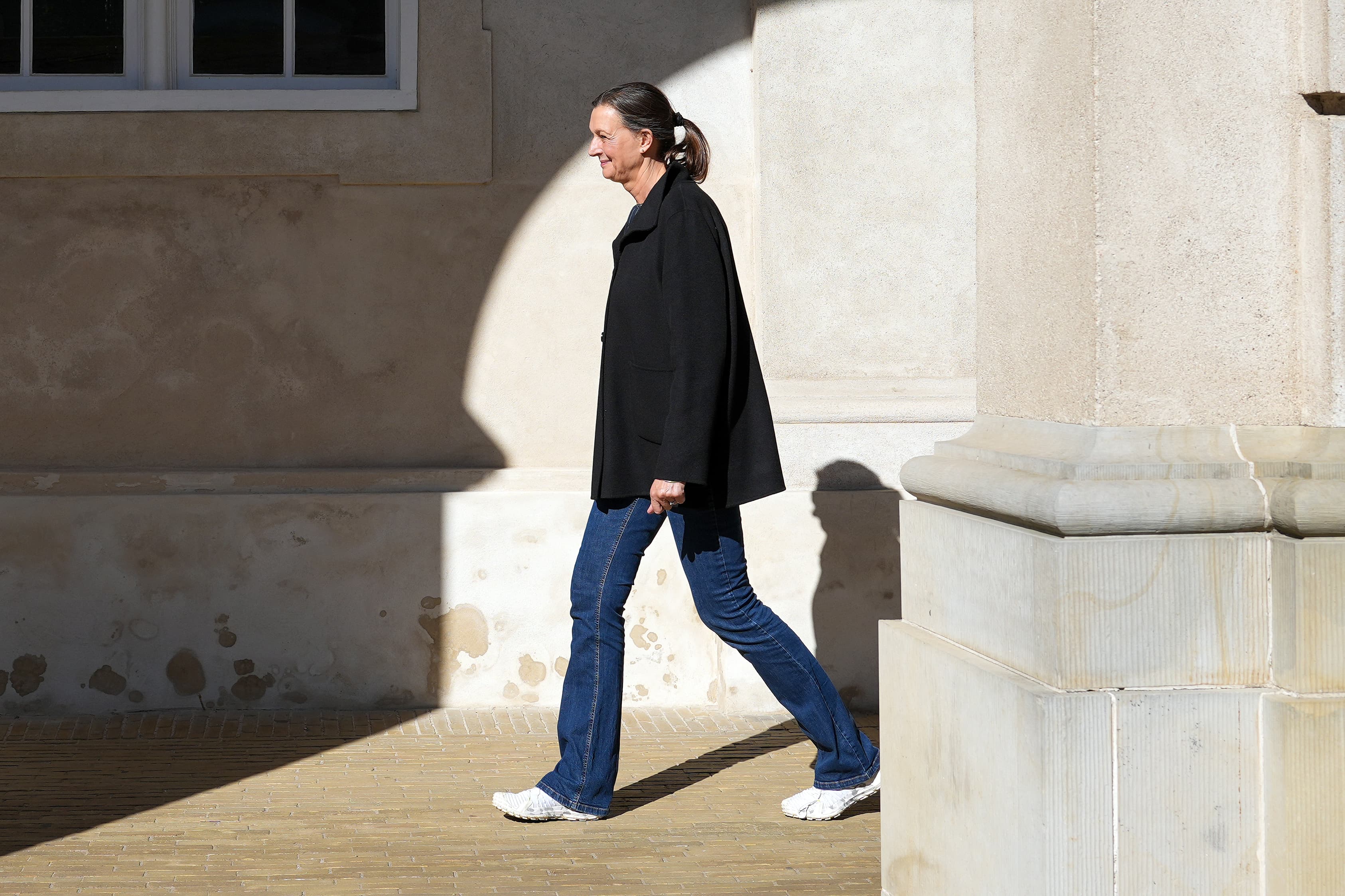The Art of Eating: Where Food Meets Architecture
The dining experience isn’t served only on the plate – it’s delivered through the architecture, the atmosphere, and the interior design. A focus on aesthetics is taking up more and more space when we go out to eat.
By Anna Skovby Hansen
»Wait!« calls one of the four friends at the table. »I need to take a picture first.«
Across from her, another girl sets her fork back down with a sigh, her eyes lingering longingly on the artichoke heart revealed on a platter of colored porcelain. Beside it, a silver tray holds slices of bread dripping with parsley butter – but tonight, the camera and the eyes eat first.
The scene is familiar. We all know that one friend, partner, or parent who insists on immortalizing every dish – and every detail of the setting – before anyone can dig into the butter-fried white asparagus or the cod with wood sorrel, delicately plated on hand-painted porcelain.
The backdrop completes the composition: patinated plates hang beside plaster reliefs on the walls, catching the evening light that filters through the large windows overlooking the street. The tables are carved from cool stone, contrasting with the solid brown wooden chairs whose armrests have been polished smooth by countless hands. As a finishing touch, the stiffly folded napkins are embroidered with the restaurant’s initials. Above it all, oversized floral arrangements cast dramatic shadows over silver vases. Amaranthus, lilies, and hydrangeas spill into the air, their fragrance mingling with aromas drifting from the kitchen.
The stage is set – a space designed to be remembered, photographed, and shared.
A Special Instagram Aesthetic
Few understand the fusion of food, interior, and aesthetics better than Emma – the anonymous creator behind the popular Instagram account @tosultnepiger, followed by nearly 100,000 people. On her feed, she reviews restaurants and cafés where visuals play a starring role. After all, Instagram is nothing if not a visual medium.
»In recent years, we’ve seen a wave where the focus isn’t just on the food but also on the setting – and on a distinct aesthetic. I call it the Instagram aesthetic,« she says.
This style, Emma explains, is inspired by Scandinavian and Japanese minimalism.
»It’s like a romanticized version of how Copenhagen looks in the perfect feed – large floral arrangements, Danish design furniture, vegetarian dishes topped with flowers, shades of green everywhere – whether it’s matcha, plants, or pasta on artful plates,« Emma says.
And it’s not just influencers noticing the trend. Architects and designers are seeing a growing demand for beauty in every detail – from tableware to lighting.
Jonas Bjerre-Poulsen, partner at Norm Architects, has designed multiple restaurants and observes a clear shift: interior design is no longer just about serving meals but about touching people emotionally.

»Restaurants are seeking more depth in their spaces because the experience isn’t defined solely by taste, but by everything that frames it. Today, people don’t travel and eat just out of necessity – they do it to create memories. The atmosphere can be as important as the meal itself, if not more,« says Jonas Bjerre-Poulsen.
We See Before We Taste
More than ever, diners value the interior and overall vibe just as much as the food itself. A crispy croissant or perfectly salted sauce is no longer enough – the mood, the lighting, and the design have become equally important parts of the meal. Social media has made aesthetics a competitive edge in the restaurant world.
Kim Berckentin, People & Brands Director at Sovino Brands, which owns 22 restaurants and bars in Copenhagen including Esmée, Ambra, and Café Victor, confirms this trend.
»Interior design is absolutely a key competitive factor,« Kim Berckentin says.
»For us, it’s always been about the total experience: the food, the hospitality, and the setting. If one of those three elements fails, the whole thing collapses. The interior lifts the experience – but the kitchen remains the foundation,« he says.
You can see it clearly on Sunday mornings, when people line up outside the city’s most talked-about bakeries. The fear of missing out on the sesame-topped sourdough rolls lures even the most hungover or sleep-deprived parents out the door. But the line isn’t just about bread – it’s about lifestyle, about projecting the life we want to live.
You know you’re in the right place when croissants are arranged behind the glass display with surgical precision, spaced exactly one centimeter apart, resting on a patinated wooden counter that looks like it came straight from a market in Provence. The price per croissant is starting to rival the square-meter price of an apartment in the city.
Behind the counter, bakers are kneading, slapping, and shaping dough like artisans at work – a performance in itself.
»People value visible craftsmanship. Surfaces are allowed to bear the marks of hands that shaped them; wood can have grain, stone can have rough edges. These small imperfections create authenticity and presence – in contrast to the polished sameness of chains. It’s not about perfection, but about refined honesty. That’s why we see open kitchens and bakeries everywhere,« says Jonas Bjerre-Poulsen from Norm Architects.
Danes Love Dining Out
Across all age groups, the average Dane dined out 88 times in 2023 – about seven to eight visits per month to restaurants, cafés, burger joints, nightclubs, and similar venues, according to HORESTA.
Young adults aged 20 to 29 are the most frequent guests, with an average of 143 visits per person per year. That’s nearly three outings a week, covering everything from fine dining to a quick to-go coffee.
Senses on Overdrive
»We never experience the world through a single sense. We perceive it through the whole body. Our experience is a synthesis of light, shadow, materials, temperature, sound, and scent – all merging into an atmospheric whole. It’s not just about functionality; it’s about orchestrating a symphony of impressions that anchor themselves in memory,« Jonas Bjerre-Poulsen explains.
Design shaping human emotion isn’t new – it’s what firms like Norm Architects study intensely. The experience of a space never arises from one element alone, which means even the best chef’s dish can fall flat if the surroundings don’t align.
Sound and light are crucial. We’ve all sat in restaurants where every voice blends into a noisy blur, making conversation impossible – it’s exhausting.
»A softer soundscape encourages people to speak quietly, almost whispering, creating intimacy,« says Jonas Bjerre-Poulsen.
»Sharper acoustics, on the other hand, add energy and liveliness.«
Emma agrees that visuals are central – especially when your medium is Instagram.
»If it’s a new place, I focus more on the food – that’s what I’m there for. But when I eat out privately, I might be chasing a specific vibe,« Emma says.
"There’s no doubt architecture has immense power. It shapes us – our experiences and how we exist in the world, alone and together. You can’t separate function or flavor from architecture. The surface isn’t just as important as the content – it is part of it."
A Move Away from Standardization
With all this intensity comes higher expectations. The biggest trend in restaurant and café interiors is a shift away from uniformity and quick concepts – toward spaces that are unique and rooted in local character.
»Guests don’t want the same experience everywhere. They seek the particular, the place-specific – the things that can’t be copied,« says Jonas Bjerre-Poulsen from Norm Architects.
Some venues lean into tightly curated themes, where guests are expected to photograph the same wall as everyone else. But, as Kim Berckentin from Sovino Brands notes, that can quickly become monotonous.
»We try to create natural scenes – a bar, a beautiful entrance, or a view of Kongens Nytorv across an interesting surface. The point is that the space should be photogenic because it feels authentic, not because we built a gimmick,« he says.
Signature Touches
When everyone chases the same aesthetic, the risk is losing individuality. Many restaurants now differentiate themselves through signature dishes as iconic as their interiors.
»Your signature dish can make your place famous,« says Emma from @tosultnepiger, mentioning examples like Barabbas’ caviar pasta, Atelier September’s avocado toast, Esmée’s soft serve, or Babylon’s seafood tower.
»People come for both the dishes and the spaces,« she notes.
Jonas Bjerre-Poulsen sums it up.
»Guests seek experiences where food, architecture, service, and atmosphere merge into something greater than the sum of their parts. Our role is to create settings where that resonance can happen –not through theatrics, but through careful attention to the sensory, the honest, and the human.«
Kim Berckentin agrees that guests increasingly appreciate cohesive aesthetics – but reminds us that design alone isn’t enough.
»Ambience and aesthetics might draw guests in the first time, but without great food and hospitality, it won’t last. Design sets the stage – but the kitchen is the heart,« Kim Berckentin says.

Too Much of a Good Thing?
Of course, interior design can go too far. We’ve all entered a place and instantly felt out of place – either overdressed or underdressed – and that self-consciousness can ruin the experience.
»An overly designed space can make guests uncomfortable,« says Emma. »Imagine walking into an all-beige room where the servers are dressed in linen while you’re in loud colors – you instantly feel self-aware. You’ve got to be careful not to make it too polished.«
That’s a sentiment shared by Sovino Brands.
»If you get too caught up in a concept, you risk losing the soul of the place,« says Kim Berckentin.
»We try to strike a balance—building on timeless comfort and functionality, then adding special details on top. That way, our venues age well and retain their personality and charm,« he explain.
Architecture as a Form of Hospitality
Designing a setting for a meal is one of humanity’s oldest cultural practices.
»For thousands of years, hospitality has been about creating beautiful, functional spaces for others. It’s a form of care – where architecture, food, and atmosphere work hand in hand,« says Jonas Bjerre-Poulsen.
Large chains have systematized hospitality – and some even study comfort scientifically.
»Some succeed in creating holistic, meaningful experiences,” he says, »while others use design cynically. In fast-food chains, for example, the architecture is sometimes intentionally unpleasant –harsh acoustics, bright lighting, loud music – all designed to get people in and out quickly. The space becomes a tool for turnover, not for experience,« Jonas Bjerre-Poulsen explains.
At the same time, he notes a countertrend:
»More and more clients want to create places where dining isn’t just about eating, but about being enveloped in an atmosphere that feels honest, sensory, and memorable.«
»There’s no doubt architecture has immense power. It shapes us – our experiences and how we exist in the world, alone and together. You can’t separate function or flavor from architecture. The surface isn’t just as important as the content – it is part of it,« he concludes.
Bon appétit.
Mere fra DAC Magazine



